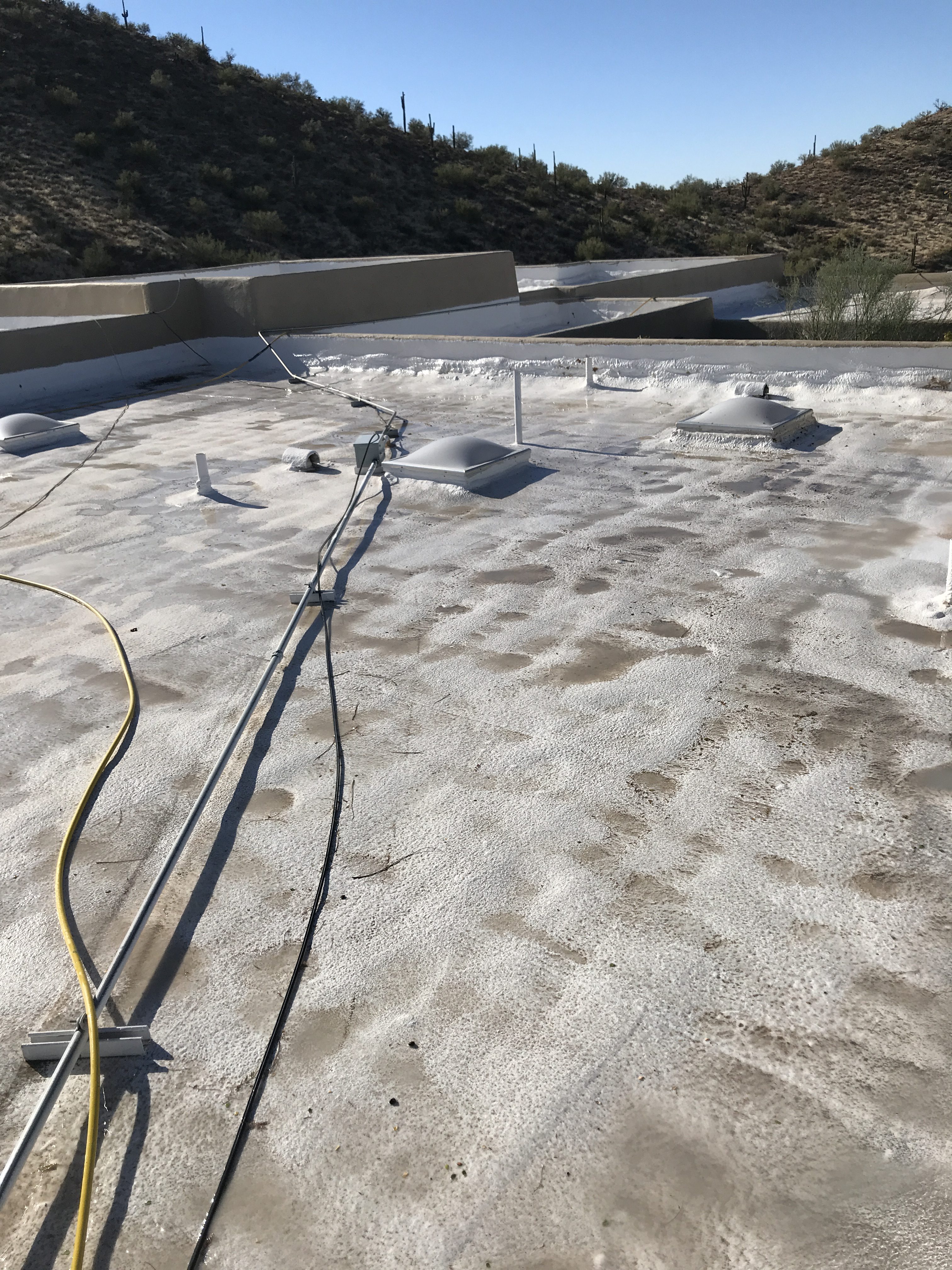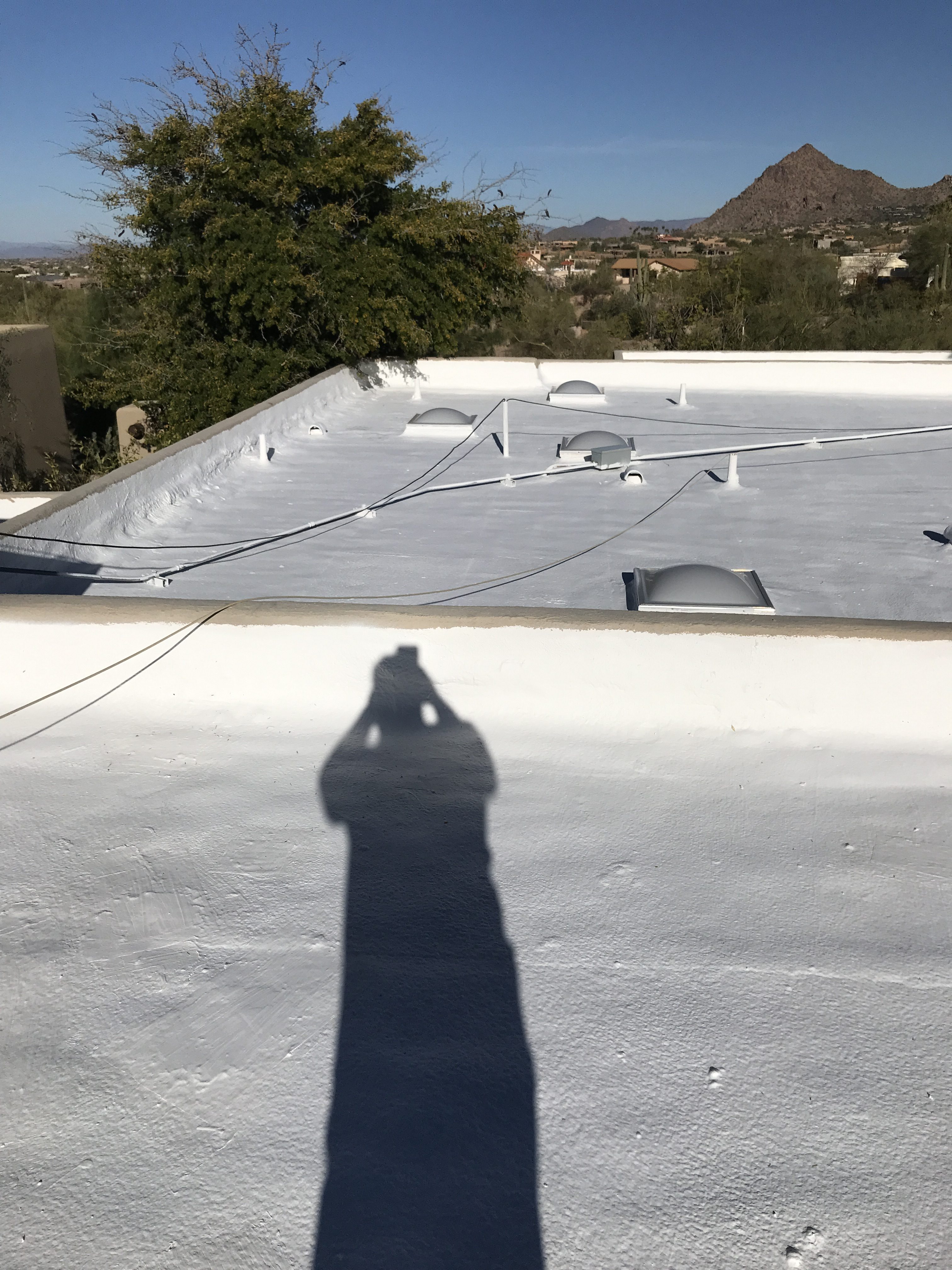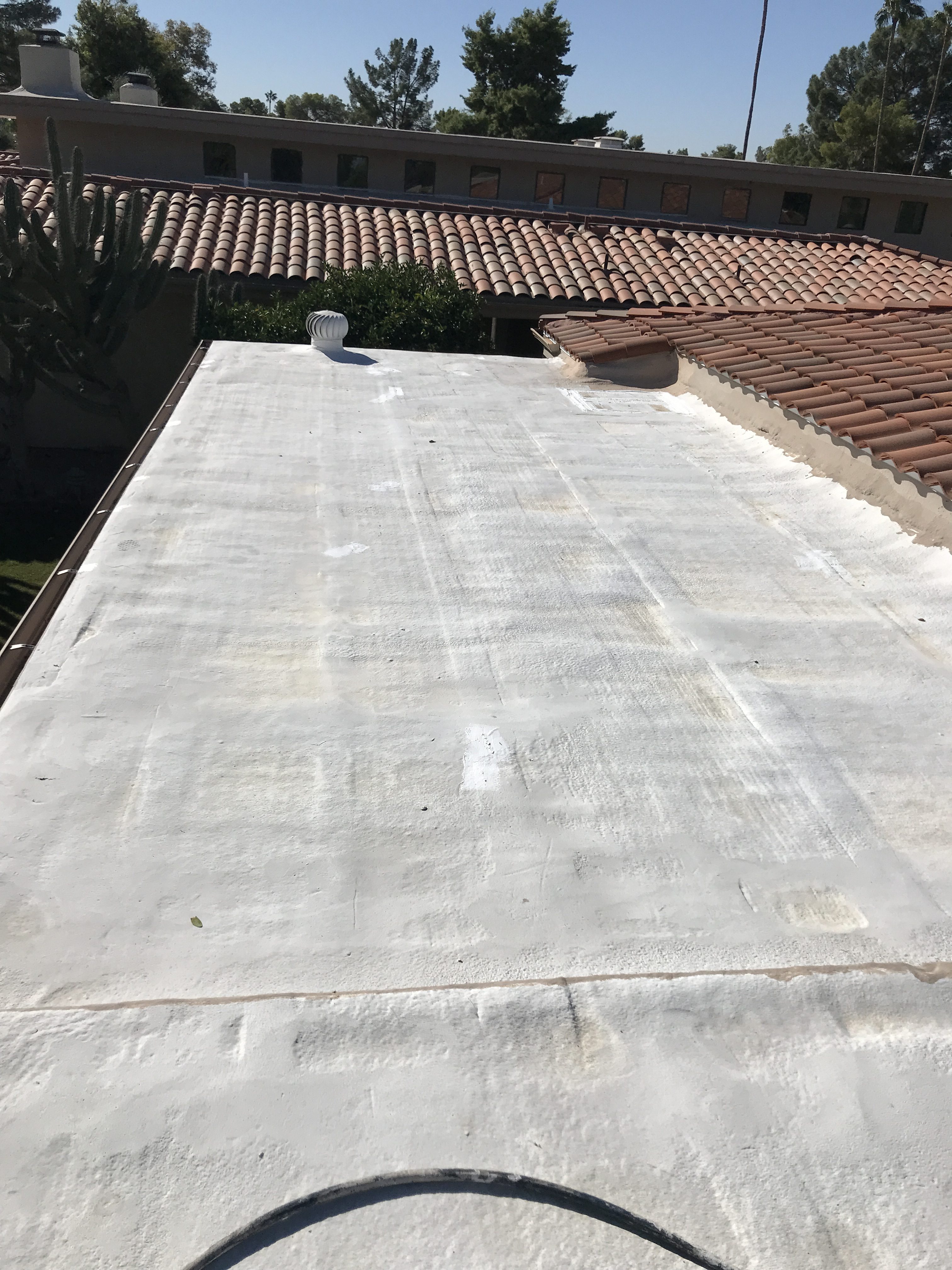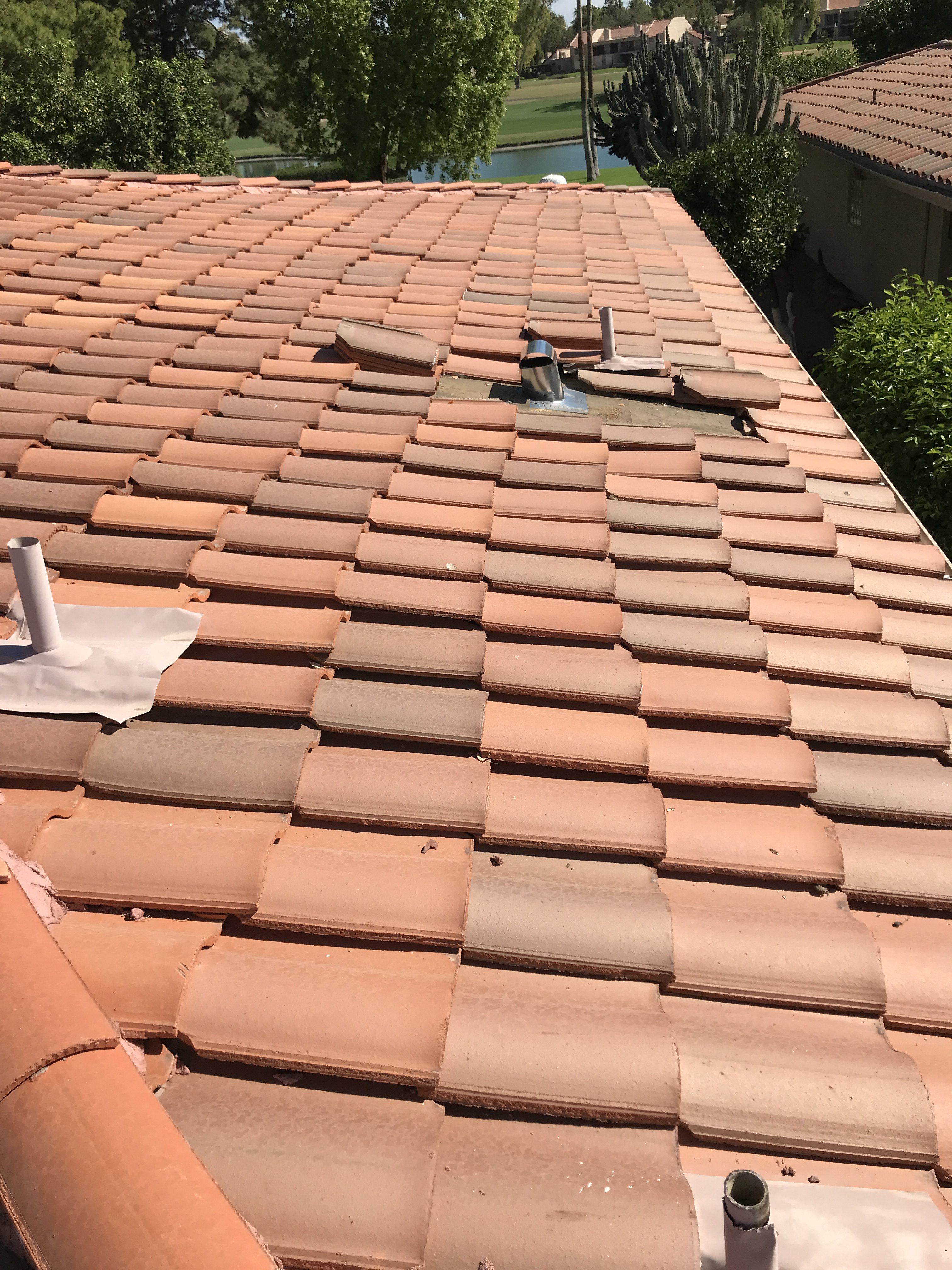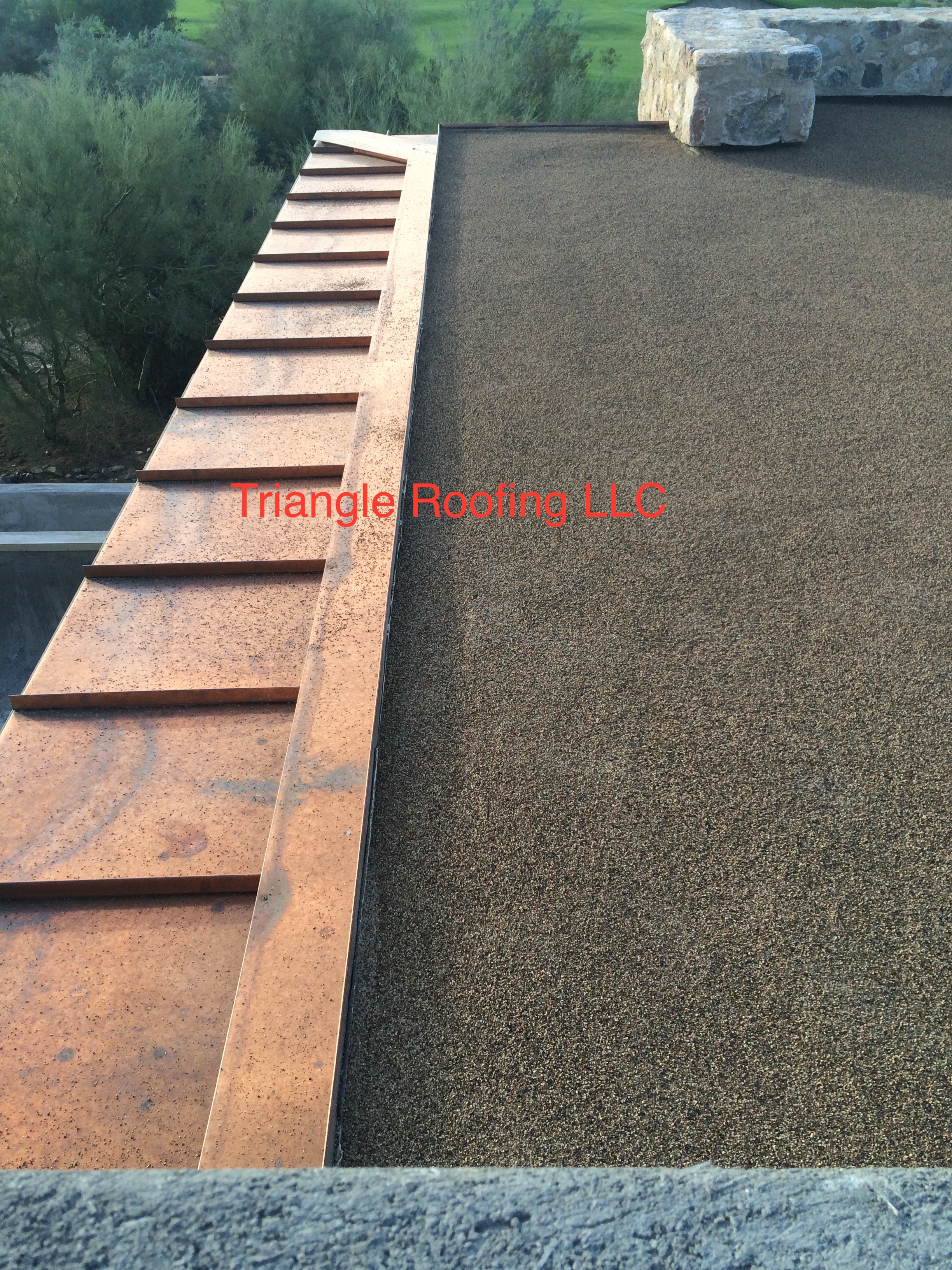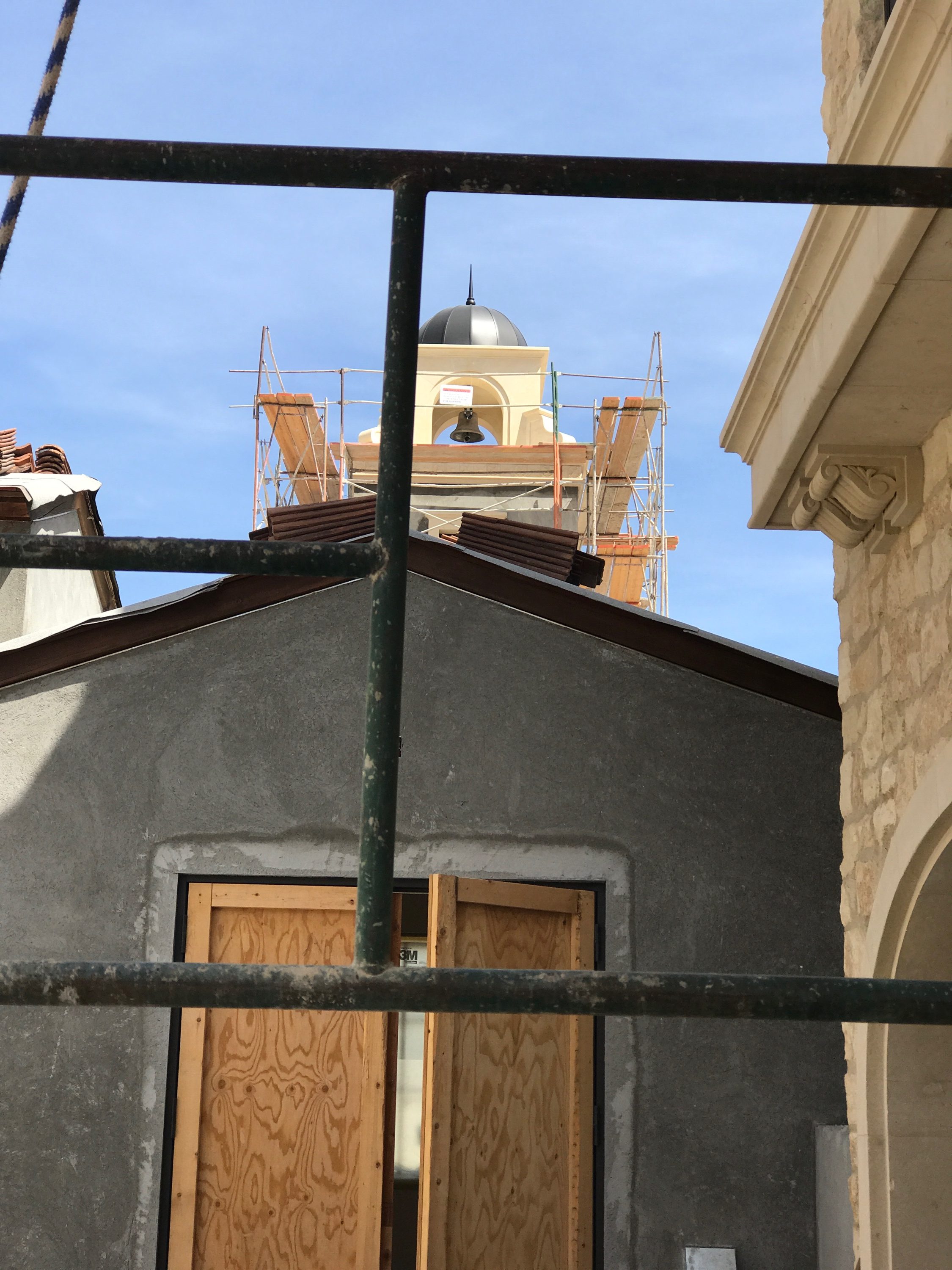Scottsdale Roofing Troon North – Spraying Polyurethane Foam Roof Coating Over an Existing Roof
Spray foam isn’t just used for insulation — it can also be used for insulating the roof. So if its restorable keep it.
The flat roof of this 1984 Custom-designed house in Troon North was a good candidate for a polyurethane spray-foam roof around 1994 over an existing Built-up roof.
When our clientsl roof began leaking, the couple hoped to find a replacement roofing that would be energy-conserving, leakproof, cost-competitive, and reasonably green. As the house’s roof sheathing doubled as a finished ceiling, the old insulation was scant. They broiled in the summer and hemorrhaged money during the heating season.
Our client’s live in a 1984 Custom-designed house in Scottsdale, Arizona. Jim does the lighting and Patrica does the landscaping. Ultimately, our client chose to install a closed-cell sprayed polyurethane foam (SPF) roof — sprayed directly over the old built-up roof in 1994 — because:
Insulating inside was out. The exposed underside of the 2×6 T&G roof deck was classic. Besides, the ceilings were just a shade above 8 ft. and the couple didn’t want to lose 4 in. to 6 in. of headroom to insulation.
RELATED ARTICLES
How to Insulate a Low-Slope Roof
Scottsdale Roofing in Troon North
Closed-cell SPF has an R-value of 7.14 per inch, making it the perfect antidote to the old roof’s dismal energy profile. The old roof assembly, with two layers of Built-up roof is about an -10 R- value One inche of SPF would bring it up to at least R-17. Spray foam was also particularly well suited to this roof because it had parapets, which defined the edges of foam. (Exterior spray foam only works on flat or low-pitch roofs; for pitches greater than 4/12, rigid foam panels are the over-roof-deck choice.)
A spray-foam roof could be applied directly to the old roofing once it was prepped and cleaned up a bit. Not stripping the old roof and sending the debris to the landfill was also a big green plus. Besides, spraying-over would save the labor costs of stripping the old roof.
Four inches of closed-cell polyurethane is a Class II water retarder, a semi-impermeable membrane that makes leaks all but impossible. As the foam expands and adheres aggressively, it would seal the many pipes and conduits running across the roof of a house with no cavity under the sheathing in which to hide pipes.
Compared to the obvious alternatives, an SPF roof was actually less expensive than installing and then insulating either a new torch-down roof or a PVC membrane. And that didn’t even include the cost of stripping the old roof. There were energy-efficiency rebates available for installing an SPF roof but the couple was so busy that, as we put it, “We couldn’t afford the time to save money.”
Is spray foam roofing green?
So was this spray polyurethane foam a green choice? Yes and no, but mostly yes. Since the early days of sprayed foam insulation (the earliest foams were urea-formaldehyde based), the insulation industry has cleaned up its act a lot. Although the two chemical components of SPF are largely petroleum-based, once the polyurethane mixture foams and cures, it is chemically inert and doesn’t off-gas. (Manufacturing PVC, in comparison, involves some particularly toxic chemicals.)
Not sending old roofing to the dump is a plus, as is the excellent R-value of SPF foam. (Sometimes it takes oil to save oil.) An SPF roof can also be quite durable when the polyurethane is sprayed with a special acrylic top coating that protects the foam against UV degradation. Lastly, the foam’s light color will reflect sunlight so, all in all, it should be a relative cool roof.
With an addition a few years, but nothing was done to the old roof. There was about 100 blisters and the bird’s and the bee’s were tearing up the parapet walls in the old section. So we now did out Triangle Roofing Flat roof restoration. Repairing all the blisters, enhancing the drainage from the low-spot ponds and fixing all the bird and bee holes.
